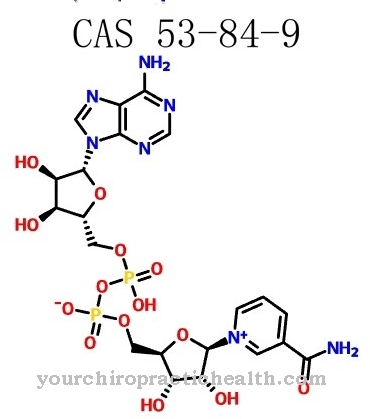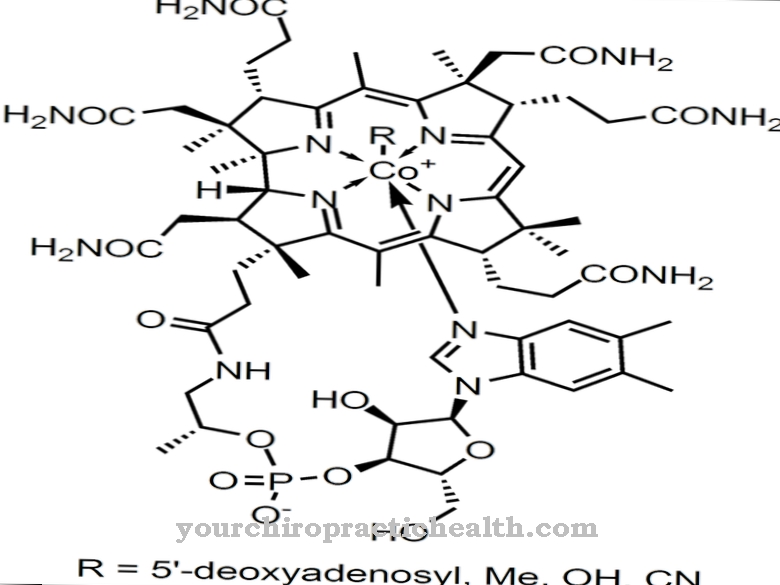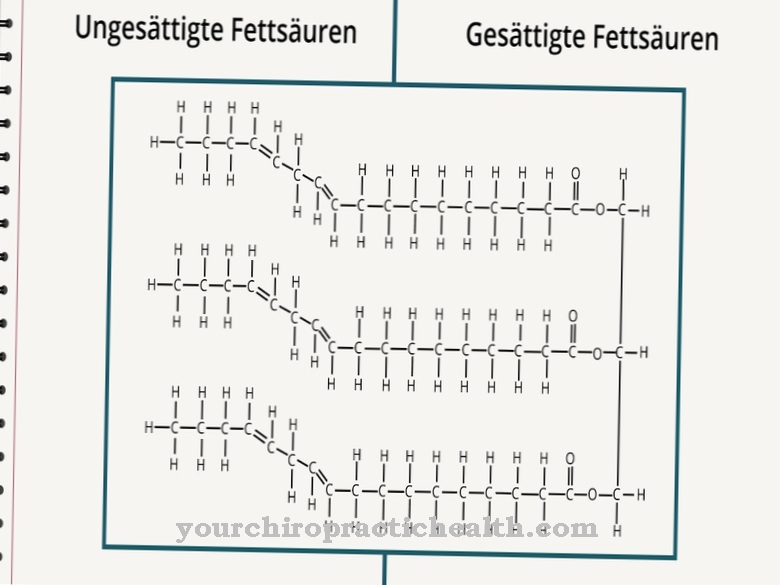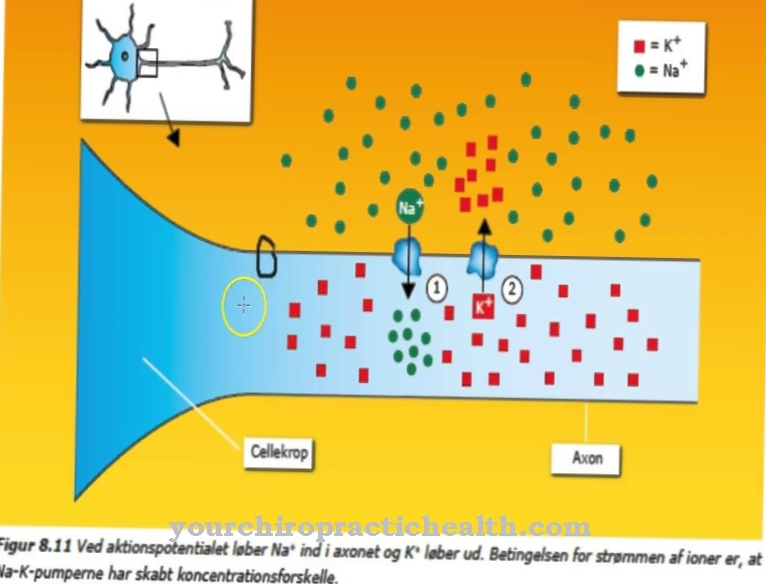Tryptophan is one of the essential amino acids. It is absorbed into the human body through food.
What is tryptophan?
As tryptophan (Trp) or L-tryptophan is called a proteinogenic amino acid. It has an aromatic structure and an indole ring system. Tryptophan is an essential amino acid.
This means that it is not made in the human body. For this reason, they must be supplied through food. Tryptophan is an important part of numerous proteins. The human organism can synthesize various biogenic amines from the aromatic amino acid by decarboxylation. These primarily include serotonin, melatonin and tryptamine.
Tryptophan is also used to treat mental and physical impairments because the important neurotransmitter serotonin is derived from the amino acid.
Function, effect & tasks
The amino acid tryptophan fulfills several important functions in the human body. As already mentioned, it serves as the starting material for the tissue hormone serotonin, which is involved in numerous processes in the cardiovascular system such as blood pressure.
Serotonin has a different influence on the blood vessels, which can be attributed to the local receptors. As the blood vessels in the muscles widen, the lungs and kidneys narrow.
Tryptophan also accelerates blood clotting and wound healing. The amino acid also has a positive effect on bowel movements. Tryptophan is of particular interest as a mood enhancer. This effect comes about through the conversion of the amino acid into serotonin. Tryptophan is extremely important to regulate the emotional state of people. This has positive effects on people's wellbeing. Therefore, due to its mood-enhancing properties, serotonin is also considered a happiness hormone.
Another important raw material is tryptophan for the hormone melatonin, the production of which is reduced by daylight. Furthermore, tryptophan is involved in the synthesis of vitamin B3 (niacin). It acts as a provitamin and plays an important role in the metabolism of fats, carbohydrates, proteins and amino acids. This ensures that the body is supplied with energy.
Tryptophan is also important for the development of tissue and structural proteins. Since L-tryptophan also affects appetite, it can have a positive effect on weight loss in overweight people as part of a diet. Preparations with tryptophan are also important for competitive athletes because they can increase their performance in this way.
L-tryptophan is also a component of various proteins. The amino acid also indirectly participates in numerous enzymatic reactions.
Education, occurrence, properties & optimal values
Tryptophan is produced both naturally and industrially. A natural biosynthesis takes place in plants and microorganisms. The enzyme anthranilate synthase catalyzes the conversion of chorismate into anthranilate. In the further course of the process, indole is split off, which then results in tryptophan with L-serine. The biosynthesis of L-tryptophan from L-serine and indole also takes place in industrial production. For this purpose the manufacturers use a wild-type mutant of the bacterium Escherichia coli.
Tryptophan is found in many foods. In contrast to the water-soluble vitamins, it is hardly lost during cooking. The amino acid has a strong heat resistance and is also not water-soluble. However, tryptophan is only available in bound form, so that only a fraction of its content reaches the organism. Foods rich in tryptophan include dried peas, chicken eggs, soybeans, oatmeal, walnut kernels, cashew nuts, cow's milk, pork, salmon, cornmeal, unpeeled rice and unsweetened cocoa powder.
As an amino acid, tryptophan is mainly found in plant and animal foods. So it occurs in 100 grams of soybeans in an amount of 590 milligrams. Its content in unsweetened cocoa powder and cashew nuts is also high. The recommended dose of tryptophan is around 250 milligrams per day.
Diseases & Disorders
If there are disturbances in the transport or absorption of tryptophan within the body, this often leads to serious symptoms such as blue diaper syndrome (tryptophan malabsorption syndrome) or Hartnup's disease.
In tryptophan malabsorption syndrome, the levels of tryptophan in the blood are too low. Since the tryptophan is not absorbed, it is bacterial degradation to indole, which is metabolized in the liver to indican. When it comes into contact with air, the indican turns blue, which in turn leads to a corresponding coloration of their diapers in the affected babies. They also suffer from hyperphosphaturia, hypercalcaemia, fever attacks and stunted growth.
A deficiency in the amino acid also has a negative impact on health. Those affected often experience depression, mood swings and anxiety disorders. The reason for this are functional disorders of the different messenger substances, which can no longer carry out their tasks due to the deficiency symptoms.
Possible causes for a tryptophan deficiency are disorders of the absorption capacity of the amino acid such as liver damage or gastrointestinal inflammation.A lack of tryptophan often leads to problems falling asleep and difficulty sleeping through the night. In addition, existing irritable bowel syndromes are aggravated by a tryptophan deficiency. These complaints can be treated through targeted administration of the amino acid.
There are no health consequences to be feared from an overdose of tryptophan. This means that the amino acid does not have any toxic effects that could have a negative impact on the body.
In medicine, tryptophan is also used specifically against certain diseases. For example, it is considered effective for treating steatohepatitis. The amino acid is also an important natural antidepressant.






.jpg)









.jpg)
.jpg)



.jpg)






